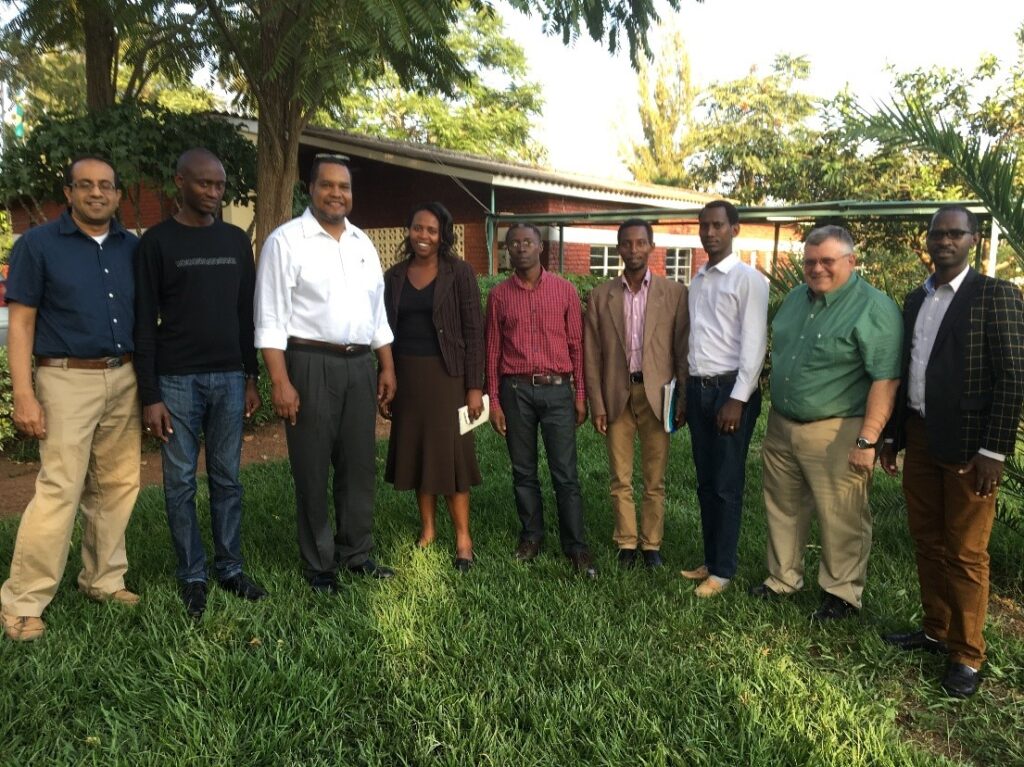Main Content

With about 10% of the world’s population considered to be undernourished, international agricultural development remains a top priority for economists and policy makers.
Obviously, policies that target agricultural development should be effective. But why is it important that they be balanced?
One answer to this question relates to the ends of agricultural development. An approach to development that seeks only to increase agricultural yields—which is a rough description of the 20th century’s Green Revolution—appears to many observers to be out of balance. It ignores goals like sustainability, new findings on optimal nutrition, and the possibility of preserving what is best about traditional rural life.
Achieving greater balance across these many ends of international development has been a central theme of DAFRE Professor Anwar Naseem’s work on behalf of the US-funded Feed the Future Research Consortium, where he serves as project manager.
Dr. Naseem’s primary area of research as an economist, however, has always been about achieving balance in the means of agricultural development. For example: Should genetically modified crops ever be on the menu of technology options in developing countries? Should new plant varieties receive intellectual property protection?
On questions like these, one can argue that Naseem is one of a relatively small number of researchers whose perspective is truly balanced
The reason for this is that a significant slice of the global policy community has taken certain technology options off the table. They do so in pursuit of sustainability, but often their decisions appear to be based on broad generalizations rather than on hard evidence.
“When people hear the words patent and plant used in the same sentence,” explains Naseem, “they automatically think of worst-case scenarios, like Monsanto’s Roundup-friendly gene, or seeds engineered to have a kill-switch. In fact, some of the most important work on new plant varieties is conducted by entrepreneurs or large farmers within developing countries. It is not especially advanced in terms of biotech. Think local adaptation, not the creation of new life forms.”
If this kind of research is more modest than what you might see coming out of a laboratory in Missouri, so too is the patent protection available for these local plant varieties.
“Local adapters,” says Naseem, “don’t typically receive patents. They might receive a lesser form of patent, called ‘plant breeder’s rights,’ with a shorter duration than a standard patent. The question is, do PBRs provide benefits that outweigh the costs in terms of a temporarily high monopoly price?”
Working with longtime colleagues Carl Pray and Latha Nagarajan of the International Fertilizer Development Center, Dr. Naseem’s empirical research showed that intellectual property protections in countries like Kenya and India led to moderate increases in both yields and the choice of plant varieties. He is quick to point out that “we still need to worry about yields,” reflecting a concern for balance that is not universal among today’s development experts.
In contrast to other U.S. land grant scholars, Dr. Naseem has lived in places that sit at the top, bottom, and middle of the global income ladder: Pakistan, Thailand, Ethiopia—even Quebec. From 2019 to 2020 he was a visiting professor at the University of Central Asia in Tajikistan. This institution was essentially built from scratch by the current Aga Khan, leader of the Ismaili movement of Shia Islam. Dr. Naseem was impressed by the optimistic, can-do attitude toward development taken by the university’s founder. When asked what really stood out about the place, he mentioned “students who are progressive, idealistic, and fully conversant with today’s global problems.”
The Department of Agricultural, Food, and Resource Economics is grateful for Dr. Naseem’s skills in economics, policy evaluation, teaching, and project management. Perhaps more important, though, are the compassion and sense of mission he displays as he works to solve some of the 21st century’s most urgent and difficult global problems.